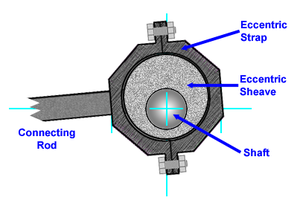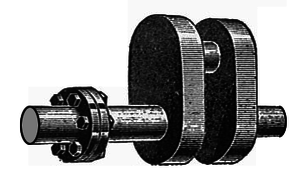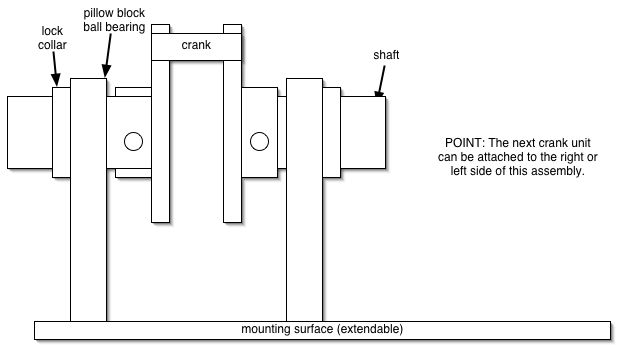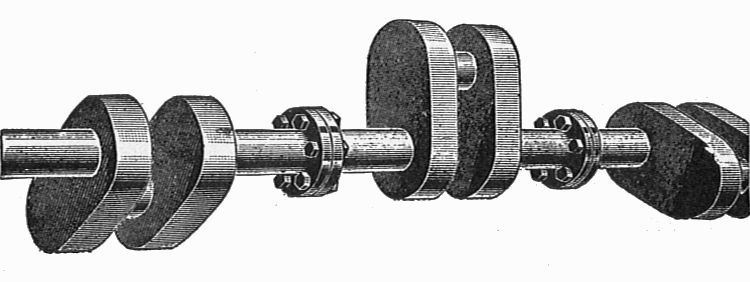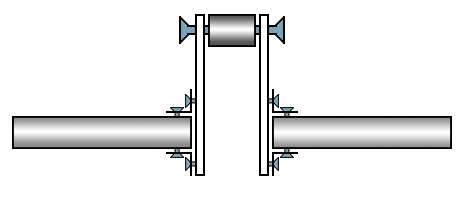Steam Engine Crank
Main > Energy > Steam Engine
Elements
The intent of a crankshaft is to convert the linear, simple-harmonic-motion, of a piston into rotational energy. This can done in a variety of ways:
Eccentric
An offset disk (eccentric sheave) surrounded by a circular piece of metal (eccentric strap) that attaches to the piston connector rod. See wikipedia [1]. The eccentric has the advantage that the drive shaft doesn't have to be broken to capture energy from a piston/cylinder. Also, it can be adjusted around the shaft for timing purposes,especially if more than one eccentric is used on a single shaft. See also, Steam Engine Crank/Eccentric.
(How is it balances? Does it require balancing?)
Return Crank
An arm attached at right angles to a shaft to which the piston connector rod is attached. See wikipedia [2]. While the return crank is simpler to make, in some ways, it requires that the offset crank be balanced by an equal weight of metal on the opposite side of the drive shaft. This can be difficult to calculate and often requires dynamic balancing. See also, Steam Engine Crank/Return Crank.
Some Designs
The point of the above is that using a shaft, bearings, and other off-shelf parts - one can put together the crank assembly. The Crank arms go over the shaft and are attached with a set screw (circle in diagram). One can extend this assembly to as many cylinders as needed.
Dimensions here are a 2" shaft - and about 4 inch stroke.
another picture of a crank for a 3 cylinder engine:
Here is another approach:
Main > Energy > Steam Engine
